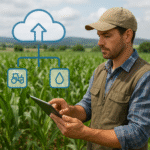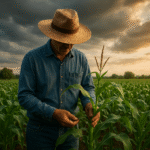Cloud-based farm management platforms are transforming the agricultural landscape by integrating advanced technologies into daily operations. These systems enable farmers to monitor field conditions, track equipment, and analyze crop performance from any location with internet access. Through a combination of automation, data-driven decision-making, and remote oversight, growers of all scales can optimize resource allocation, reduce waste, and boost yields.
Understanding Cloud-Based Farm Management Platforms
At their core, cloud-based platforms store and process agricultural data on remote servers, accessible via web browsers or mobile applications. This removes the need for costly on-site hardware and allows multiple stakeholders—farm owners, agronomists, and supply-chain partners—to collaborate in a centralized digital environment. By leveraging the cloud’s inherent scalability, farms can gradually expand their data collection points without worrying about local storage limitations or complex IT infrastructure upgrades.
These platforms often integrate with field sensors, drones, GPS-guided machinery, and satellite imagery. Real-time data is transmitted wirelessly, feeding into a comprehensive dashboard where analytics tools reveal patterns in soil moisture, weather trends, and crop health. With the right configurations, alerts can be set up to notify managers about equipment malfunctions, nutrient deficiencies, or pest outbreaks.
Key Features Driving Precision Agriculture
- Connectivity and Remote Monitoring: Reliable network connections enable 24/7 oversight of remote fields. Farmers can log in from smartphones or tablets to view live sensor readings and adjust irrigation schedules instantly.
- Analytics and Reporting: Powerful analytics engines parse vast amounts of data, generating actionable insights on planting dates, fertilizer application rates, and harvest windows.
- Automation of Routine Tasks: Automated irrigation, fertilization, and pesticide application systems reduce labor costs and minimize human error.
- Real-time Weather Integration: Platforms pull weather forecasts and historical climate data to recommend optimal field operations and anticipate environmental stressors.
- Historical Data Management: Cloud platforms archive past performance metrics, enabling longitudinal studies on yield improvements and soil restoration efforts.
Benefits of Cloud Adoption in Agriculture
- Innovation: By embracing cutting-edge digital tools, farmers remain competitive and can adopt best practices faster than the competition.
- Efficiency: Automated workflows and precise resource management cut input costs and maximize output per hectare.
- Sustainability: Data-driven application of water and fertilizers reduces environmental impact and preserves ecosystems.
- Enhanced Collaboration: Teams across regions can access the same live data, facilitating expert consultations and coordinated decision-making.
- Cost Savings: Eliminating on-premise servers and reducing manual labor delivers immediate operational savings.
- Adaptability: Modular cloud components let farms scale up or down according to seasonality and budget constraints.
Implementation Challenges and Strategies
Despite the clear benefits, transitioning to a cloud-centric system poses certain obstacles. These include connectivity issues in remote locations, data security concerns, and the need for user training. Addressing these hurdles requires a multifaceted approach.
Connectivity in Rural Areas
In many agricultural regions, high-speed internet remains unreliable. Solutions involve deploying dedicated cellular routers, leveraging low-earth-orbit satellite services, or setting up private mesh networks between field sensors and on-farm gateways. Partnerships with telecom providers or government initiatives often subsidize infrastructure costs, closing the digital divide for rural producers.
Data Security and Privacy
Storing sensitive farm data in the cloud raises questions about ownership, access rights, and protection against cyber threats. Reliable platforms employ end-to-end encryption, multi-factor authentication, and role-based access controls. Farmers should perform due diligence, examining Service Level Agreements (SLAs) and compliance certifications like ISO 27001 or GDPR to ensure robust data governance.
Training and Change Management
Adoption rates can falter if users are unfamiliar with digital tools. Comprehensive training programs—offered by vendors or agricultural extension services—are critical. Hands-on workshops, online tutorials, and peer-to-peer learning networks help bridge the skills gap. Progressive rollout strategies, where basic modules are introduced before advanced capabilities, foster user confidence and long-term engagement.
Future Trends Shaping Farm Management
As cloud technologies mature, several emerging trends will further revolutionize agriculture:
- Artificial Intelligence and Machine Learning: Predictive models will forecast disease outbreaks and yield estimates with increasing accuracy.
- Edge Computing Integration: Processing data closer to the source will reduce latency for time-sensitive automation tasks, even when connectivity is limited.
- Blockchain for Traceability: Distributed ledgers will track produce from field to fork, enhancing food safety and consumer trust.
- Internet of Things (IoT) Expansion: Sensor networks will proliferate, measuring soil chemistry, livestock health, and equipment performance in unprecedented detail.
- Vertical and Urban Farming: Cloud platforms tailored to controlled-environment agriculture will manage hydroponic systems and LED lighting schedules for city-based farms.
By integrating these innovations, cloud-based farm management platforms will not only streamline current operations but also unlock novel opportunities for sustainable growth. As farmers and agri-businesses navigate evolving market demands and climate uncertainties, digital tools will remain at the forefront of modern agriculture’s transformation.










